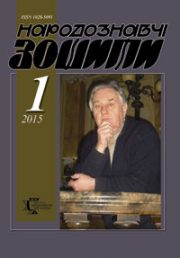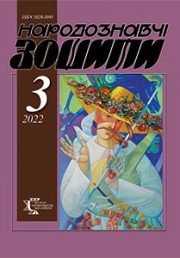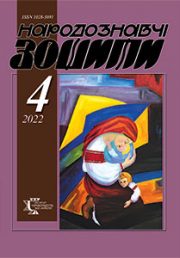The Ethnology Notebooks. 2019, № 6 (150), 1640—1644
UDK75.036(477)(092)
DOI https://doi.org/10.15407/nz2019.06.1640
THE PRESERVED ARTISTIC HERITAGE OF OSYP VAS’KIV (1895—1972)
MELNYK Ivan
ORCID ID: https://orcid.org/0000-0001-5301-8253
Ph.D. in Art History,
Head of the Research Department,
Lviv National Academy of Arts
79011, Ukraine, Lviv, Kubiyovycha str., 38
e-mail: ndslnam@gmail.com
Abstract. Introduction. Over the last decades, the complex research work in the fields of history in general, art history and literary studies provided a basis for an objective picture of the artistic process of the first half of the 20th century in Ukraine, with the leading role of avant-garde and modernist movements. But it also stressed the importance of studying the creative work of each artist in the context of already quite clearly defined panorama of artistic phenomena. Considering that, the personality of Osyp Vas’kiv, a painter and graphic artist, who in the 1920s belonged to the artistic societies of Lviv and Warsaw deserves special attention.
Problem Statement. The article is devoted to the work of artist and teacher, one of the least studied Ukrainian modernists O. Vas’kiv (1895—1972). And thus it is related to the crucial problem of studying the preserved heritage of the little-known Ukrainian artists of the first half of 20th century, who worked in the cities and villages, peripheral in terms of the intensity of artistic life, but at the same time the creative work of those artists represented the dominant movements of avant-garde and modernism.
The purpose of the current research is to consider the basic facts of O. Vas’kiv biography, as well as to attempt the scientific reconstruction of his multifaceted pictorial and graphic heritage.
Methods. We rely mainly on the traditional art historian methods of systematic, chronological, stylistic analysis, which provide a basis for studying the artist’s heritage in the broad context of the peculiar period of time and allows to draw the comparison between other contemporary artists and their works. The historical method, combined with principles of structural analysis, was applied to complete the general picture of historical and cultural processes of the first half of the 20th century.
Results. An interest in philosophy, in particular the culture of the classical East, determined the broad range of practical skills that O. Vas’kiv put as a background of his work. Equally important was the period of his participation in the artistic life of Warsaw and Lviv in the 1920s, which made a visible imprint on the early creative experiments of O. Vas’kiv and largely outlined the direction of future pathways for the transformation of individual artistic style, distinguished by the skilled use of different elements of the visual language of cubism, expressionism, constructivism. The specificity of his creative legacy demands the thorough study of all stages of his biography, as well as detailed attribution and analysis of his paintings and graphic prints.
Conclusion. The study of little-known works by O. Vas’kiv should be an important step towards returning the forgotten and little-known names of artists of the first half of the of 20th century, as it will contribute to the more coherent picture of Ukrainian modernism in the visual arts.
Keywords: Osyp Vas’kiv, Delyatyn, modernism, painting, graphics, formal search, artworks exhibition, teaching.
Received 28.11.2019
REFERENCES
Mysjuk, A. (2015). Ukrainian Ghandi — Vas’kiv O.M. Kyiv: Salutis [in Ukrainian].
Prohas’ko, T. (2013). Sherlock for Robinson, or Crusoe for Holmes. Krytyka (Part 5—6, pp. 30—31) [in Ukrainian].
Vjel’oh, A. (Ed.). (2006). The mountains of Hutzul’shchyna. Krakiv: Centr. Oseredok Gir. Turyzmu PTTK [in Ukrainian].
Zvid pam’jatok Ivano-Frankivs’koi’ oblasti. Nadvirnjans’kyj rajon (Book 2). Nadvirnjans’kyj rajon. Smt. Deljatyn (2015). Ivano-Frankivs’k: Lileja-NV [in Ukrainian].






